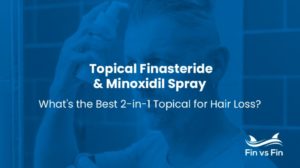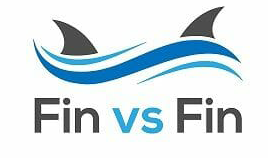An unbiased review of Zero, the online smoking cessation service that combines professional medical advice with product recommendations to help you quit smoking.
You’ve determined it’s time to quit smoking. It’s hard separating yourself from cigarettes and nicotine. And with all kinds of products and how-to’s on the internet, each promising better results than the last, it’s easy to get lost in the noise. If you’ve already tried to quit and failed, how can you know what products to trust?
Although vaping may seem like a healthier alternative to smoking, recent outbreaks of lung injuries suggest otherwise. What you really need to quit is a personalized treatment plan, designed by a doctor available to recommend legitimate, FDA-approved smoking cessation meds. Better yet, what if those treatments could be shipped right to your home, and you could follow up with your doc whenever you wanted, all without ever leaving your couch?
Believe it or not, that’s the exact experience offered by a fast-growing new service called Zero.
Zero is an online smoking cessation “platform” that combines the ease of online technology, cutting-edge treatments, and personalization medical advice from experts. Touting online doctor visits and a variety of physician recommended products and treatment plans, Zero aims to take the guesswork out of quitting for good. But does the approach really work to curb your nicotine habit and help you kick cigarettes once and for all?
Today we’ll review Zero’s smoking cessation suite to see if it actually can help you quit. Join us as we take a deeper dive into their offering.
Related reading: Can Vaping Cause Hair Loss?
But first, how do smoking cessation treatments typically work?

Between mental behavior therapies, over the counter remedies, and prescribed medication, it seems as though there are countless of smoking cessation treatment options out there. How do each of these work and what are the basic guidelines of using each method?
Below we break down the differences between some of the most popular treatment options for people who want to quit smoking.
1. Behavioral Therapy
Utilizing professional help, like working with mental health coaches, counselors, and doctors, this cessation option has individuals working through their habits by changing their outlook and behavior. Both the participant and professional work towards finding triggers in the addiction (whether habitual or emotional), and try to change user behavior to quit smoking for good.
2. Nicotine Replacement Therapy
Most people think of this option when they think of therapies to quit – probably because some companies that offer nicotine replacement products have big advertising budgets! Some nicotine replacement therapies include: gum, patches, inhalers, sprays, and lozenges. This treatment option works by cutting your usage of tobacco and replacing your nicotine supply by another means. When quitting smoking for good, a lot of people respond best to being weaned off of nicotine. This option may be more successful when paired with other cessation options.
3. Prescription Medications
Medications like Bupropion and varenicline (Chantix) are FDA approved drugs that need to be prescribed by doctors. These medications aid with reducing cravings and alleviating symptoms that are experienced with withdrawal.
Studies show that for healthy adults, the use of Bupropion can double the chance that 12 months from the quit date, a smoker will not be smoking. (The table in the middle of this article in the International Journal of Chronic Obstructive Pulmonary Disease shows results from five different studies – it looks like the medicine really helped!)
4. Cold Turkey - Mind over matter
Chances are you’ve already tried this method, and found it really, really difficult. With no outside help and no nicotine replacement or other medical intervention, it’s still the most common treatment – approximately 90 percent of cigarette smokers use this option when deciding it’s time to quit.
While it’s the most common, unfortunately, it has a really low success rate – just 5% of people who try to quit this way succeed. (So don’t be embarrassed if this hasn’t worked for you either.)
What does Zero offer for smoking cessation?
Step 1
First, you’ll complete an online doctor visit – which you can do on your computer or smartphone. This is a real doctor’s visit, conducted by a licensed physician. BUT, the good news is that you typically don’t actually have to talk with anyone; in most states and cases the visit can be totally conducted through a series of medical questions and information on your smoking history.
Make sure you answer these questions as honestly as you can so that the doctor can give you the right treatment program. (Personally, having done several telemedicine doctor visits, I think it’s much easier to be honest and open on a computer vs. in person!) You’ll need to have your photo ID to verify your identity. Again, you can easily do this on your smartphone or on your computer.
Step 2
If you want the treatment plan with prescription medication, a physician will review your medical and smoking history. If your situation and health is a good fit, they will recommend either a 12-week treatment plan of either Bupropion or Bupropion together with Zero’s nicotine replacement gum.
Step 3
Once your treatment plan arrives (shipping is quick, usually 2 days, and it seems like most of the doctors’ reviews take only a few hours), you’ll pick a quit date. This date is a week or two in the future, and setting the date allows you to get ready to quit – plus to start taking the Bupropion. The medicine in the Bupropion needs some time to build up in your body, so you’ll start taking it as soon as the doctors says (which is probably right when you get it).
Step 4
When the quit date arrives, it’s time to switch to the nicotine gum and stop smoking. You are going to want to really lean into the gum in the first few weeks. Zero’s plan suggests eating a piece of gum every hour or two for the first six weeks to help fight withdrawal. If you have questions, you can ask your doctor via secure messaging.
Interesting side note: Numerous studies have shown that even people who tried to quit using Bupropion and failed can benefit from the drug! This article in the medical journal Clinical Pharmacology and Therapeutics found that people who used Bupropion and failed still benefited vs. a placebo when they tried it again.
So even if you tried this particular treatment earlier, you might benefit from Zero’s combined approach and the structured program that the app provides.
How long does it take to quit smoking?
The answer, while unfortunately vague, is it depends! To understand the addictive nature of cigarettes, it’s important to break down the body’s dependence and reaction to nicotine.
Overall, nicotine’s byproduct cotinine, can stay in the bloodstream for up to three months. These levels also depend on the amount of cigarettes and frequency a person smokes. Zero’s doctors can prescribe Bupropion (brand name Zyban) for an initial 12 weeks with an option to extend to 24 weeks.
How much does a typical smoking cessation program cost?
We laid out four different treatment strategies above – and all of them have different costs. Some, like going cold turkey, are free, but the success rate is low. While combining therapies is typically the most successful, it’s also the most expensive.
Additionally, some smoking cessation options can be covered by your health insurance; so when choosing the perfect option for you, make sure to look into the logistics behind your coverage.
- Cold Turkey: Free, no additional products or services are required.
- Nicotine Replacement Therapy: Items like nicotine patches can run anywhere from $35-$45 per pack of 14. Nicotine Gum, can run around $50 for pack of 150-200 pieces, and nicotine lozenges run for approximately $50 per hundred.
- Prescriptions: Prescriptions can vary in cost depending upon the plan, your insurance, and coverage. For example, a thirty day coverage of Chantix cost roughly $130 to $485.
- Behavioral Therapy: According to the National Institute of Health, “the addition of extended cognitive behavioral therapy added $83 in smoking cessation services cost.”
- The Cost of NOT Quitting: The average smoker, pays $2,292 (a year), on cigarettes. Oh yeah, and we might die from lung cancer, and continue to be really bummed out that you are still addicted.
How much does Zero cost?
For the combined therapy, Zero costs $87 per month. The first month is discounted to $60, and if you are going with the prescription treatment option you also have a $15 initial online doctor’s visit cost.
Compared to your co-pay, the cost of a name brand drug like Chantix (~$130 to ~$485 a month), and Nicotine Gum from the pharmacy (~$50 per month), Zero is a great deal. Here is a breakdown of their various monthly bundles and costs:
Speaking of bundles and discounts, we have a newsletter that covers all the latest offerings. Subscribe below to stay in the loop:
What are the potential side effects?
According to the Physician’s Desk Reference (PDR) common reactions to the drug that the doctors’ could prescribe may include “agitation, dry mouth, insomnia, headache/migraine, nausea/vomiting, constipation, tremor, dizziness, excessive sweating, blurred vision, tachycardia (rapid heart rate), confusion, rash, hostility, cardiac arrhythmia (irregular heartbeat), and auditory disturbance.
You should tell your doctor if you have ever had manic or bipolar episodes (so answer the online doctor visit questions honestly!) And if you have any suicidal thoughts, reach out to your primary care physician immediately.
And if you are wondering if this is a legit medical company, the answer is yes. Zero is part of Roman, the online telehealth leader. Learn more about them in our article “Is Roman Legit.“
The Verdict: Does Zero work for smoking cessation?
We strongly recommend Zero for smokers, and here’s why. First of all, its approach is rooted in real science. Secondly, it offers a free doctor’s visit to help you find the best cessation program for your habits. And it’s a one-stop stop where you can get a combination of prescription medication and nicotine replacement – all of which work together to increase your chances of successfully quitting. Finally, it’s typically less expensive than going through a primary care physician.
If you feel strongly that now’s the time to quit smoking, Zero is a great place to start. Click below to see for yourself!
Frequently Asked Questions (FAQ)
How much does a typical smoking cessation program cost?
We laid out four different treatment strategies above – and all of them have different costs. Some, like going cold turkey, are free, but the success rate is low. While combining therapies is typically the most successful, it’s also the most expensive.
Additionally, some smoking cessation options can be covered by your health insurance; so when choosing the perfect option for you, make sure to look into the logistics behind your coverage.
- Cold Turkey: Free, no additional products or services are required.
- Nicotine Replacement Therapy: Items like nicotine patches can run anywhere from $35-$45 per pack of 14. Nicotine Gum, can run around $50 for pack of 150-200 pieces, and nicotine lozenges run for approximately $50 per hundred.
- Prescriptions: Prescriptions can vary in cost depending upon the plan, your insurance, and coverage. For example, a thirty day coverage of Chantix cost roughly $130 to $485.
- Behavioral Therapy: According to the National Institute of Health, “the addition of extended cognitive behavioral therapy added $83 in smoking cessation services cost.”
- The Cost of NOT Quitting: The average smoker, pays $2,292 (a year), on cigarettes. Oh yeah, and we might die from lung cancer, and continue to be really bummed out that you are still addicted.
Discover more health and wellness

Wisp BV Reviews – Is It Worth It for Bacterial Vaginosis & Other Infections?
Wisp Bacterial Vaginosis Treatment Overview Cost: $9 to about $33 per month Rx medications: Metronidazole tablets/gel, clindamycin tablets/cream OTC remedies: Boric acid suppositories, probiotics Potential

Wisp Herpes Review 2024 – Does It Work for Oral and Genital Sores?
Wisp Herpes Treatment Overview Cost: $9 to $35 per month Treatments for: Cold sores and genital herpes, episodic or suppressive therapy Rx medications: Valacyclovir and

Topical Finasteride and Minoxidil Spray Review – What’s the Best 2-in-1 Topical for Hair Loss?
If you’ve been looking into treatment for pattern hair loss (androgenic alopecia), you may have come across the ingredients minoxidil and finasteride, which are the

How to Keep Your Balls From Shrinking While on Testosterone
Key Takeaways Testicular shrinkage is a known, but avoidable side effect of TRT. Studies show that other treatments, like human chorionic gonadotropin (hCG) and Clomid

Tretinoin and Hair Loss: Does It Help Regrow Hair?
Key Takeaways Topical tretinoin may support hair growth by increasing circulation to the scalp and boosting cell turnover. Up-to-date clinical research indicates that tretinoin can

Keeps ED Review – Do Their Personalized Treatments for Erectile Dysfunction Work?
Keeps ED Meds Overview Cost: Starts at $3.20 per dose What’s prescribed: Sildenafil, tadalafilDosage: Varies Potential side effects: Cough, headache, heartburn, nausea, and more Who

















